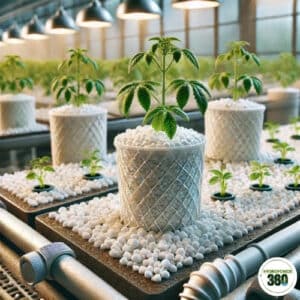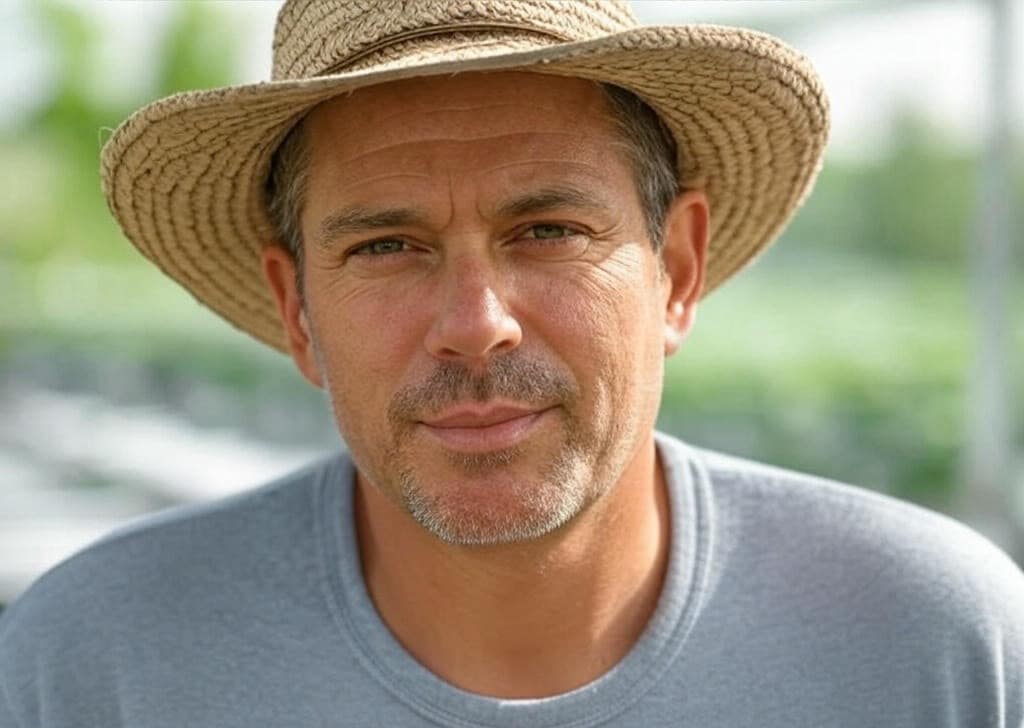How Perlite Hydroponics is Healthy for Plant Growth?
Table Of Content
Perlite hydroponics’ a clean, flexible, and astonishingly effective soilless plant-growing system. You don’t have to have done anything but dealt with inert media before to know that the balance between aeration, water retention, and pH neutrality is absolutely vital.
Perlite surpasses limits. And still, most growers complicate it or disparage it as lightweights. I’ve had my dirty fingers in this stuff deep enough over the years to declare: perlite’s long overdue for some respect.

Why Perlite? The Science Behind the Medium
Perlite is volcanic glass, expanded to a superhigh heat and then inflated into the white, sponge-like pellets you might have seen in potting soil. In hydroponics, though, it serves another function entirely. It’s not there to “fluff out” your mix—it constitutes the entire support system.
Its strongest suit? Perlite particles are full of air spaces that retain little water, and so oxygen gets to the roots through every breather and won’t be stuck in a waterlogged mess. For equal drainage and air-flow based on hydro systems, that’s liquid gold. No rot, no anaerobic stench, no choking.
It’s chemically inert. It won’t impact your pH, leach your minerals, or interfere with your nutrient routine. For dialing in accuracy, that’s a necessity.
Is It Possible to Cultivate Hydroponics with Perlite Only?
It will be controversial, especially among the devoted coco coir or rockwool mix crowd. The truth, however, is–yes, it does work, and you can grow in pure perlite. I have done so. It does work. You just have to know what it can and cannot provide.
Perlite will neither buffer nor act as a slow-release sponge. It simply means you’ll be feeding more often and monitoring your EC and pH closely. The plus side is, you’re right in control.
You can see immediately when you add anything at the root zone, and there’s an immediate response. This can be a real advantage for quick-growing produce like peppers, basil, and lettuce.
With that being the case, drought-tolerant or slow-growth crops will languish under supplemental media, particularly under warmer climates when evaporation exceeds uptake.
Perlites Are Built for Systems
Skip the DWC; those rafts and big containers floating on water are a pain when you’re working with a light medium like this. Choose systems with solid drainage and controlled flow instead.
The best one is the drip systems. Top-fed drippers and bottom-draining pots can be arranged using small individual planters. As long as your flood cycles are kept short and alternating and followed by full drainage, ebb and flow fulfills the requirements as well. Even the wick systems, which, when sensitively designed, work, require high moisture supply uniformity.
For vertically stacked systems, the light (or nonexistent) weight of perlite is a bonus. You can stack towers or columns without stressing your framework.
Root Zone Management using Perlite
Another circumstance is to tend the root zone in perlite. Perlite drains quickly and does not retain much water, so you’ll require lighter but more frequent liquid feeding. That’ll moisten the root zone but will avoid over-saturation.
Perlite gives the roots something to grasp but won’t smother them. You’ll see the roots going wild, long, fibrous, far-reaching, and outward in growth. It also causes the roots to outgrow a pot quickly. On aggressive growers, you’ll have to up-pot or root-prune between harvests.
Because it doesn’t buffer nutrients, you’ll be watching your runoff EC and pH closely. Perlite will show you what you’re feeding it immediately. When it goes bad, it goes bad bad. Stay vigilant.
Perlite Hydroponics and Its Problems
The majority of issues are caused by an imbalance of water. Droopy plants are first checked for drainage and water rate. Flushing and adding coarse-grade particles to restore airspace is used to treat compacted perlite and channel formation.
Your top layer can develop mold and algae when it is too damp or light-exposed. Top-dress dry perlite or use planters with blackout covers over your containers.
Clean out used perlite; don’t recycle it directly. Treat it with a weak hydrogen peroxide solution, wash it, and dry it out under the sun, and then use it over again. Cut corners here and you’ll be sorry mid-way through your next crop.
Perlite Particle Size
The coarse perlite gives you better drainage and air and is best for large pots or high-flow systems. Fine perlite retains more water and is best used for small pots or low-feed systems.
Avoid changing sizes if you don’t know what you are doing. Particles of varying sizes produce uneven pockets of water. Select one size for your system and crop, and stick to it through the entire cycle.
Scaling Perlite Hydroponics: Is It Possible?
Yes, but there are logistics. Perlite is light but bulky; it takes space, particularly if you are using it in beds commercially. You will require containment systems that don’t lose media but provide full drainage.
Waste disposal is also a concern. While they can be reused, perlite does degrade over a period. Large growers must budget for media replacement timelines and housekeeping equipment.
With small vertical farm operations, vertically stacked grow racks, or clean-room horticulture, however, perlite is a boon. It never clogs emitters, is easy to sanitize, and will have no residual nutrients.
FAQs
Will perlite clog my hydro system over time?
Not if you use coarse horticultural-grade perlite and filter your runoff. Avoid fine grades for active systems unless you’re layering intentionally.
How much should I water in a 100% perlite bed?
Frequently in small amounts. Think 3–5 feedings per day, depending on your crop and climate. Always flush through but allow full drainage.
Can I mix perlite with DWC systems effectively?
Not directly. Perlite floats and won’t support roots in water-based systems. Use it only as a seed-starting medium before transplanting into DWC.
Table Of Content
